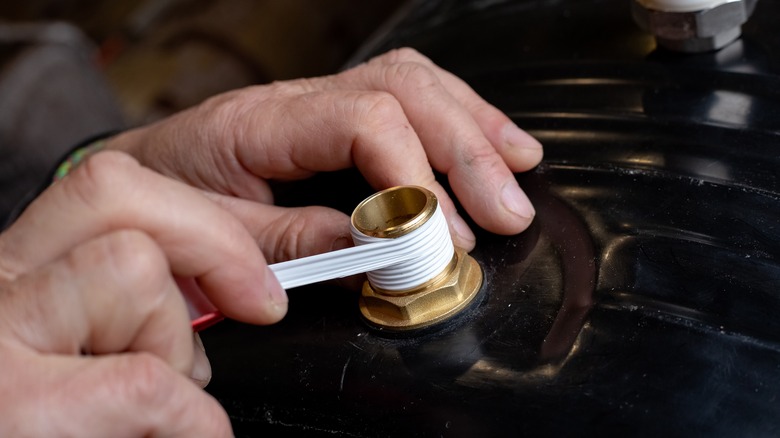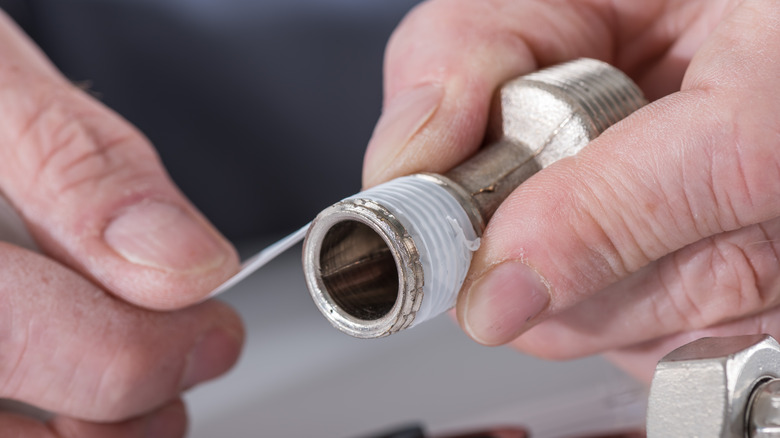The Big Mistake DIYers Make With Pipe Thread Tape
Plumbing is one of those skills that many people take for granted, believing it's easy to do on the fly. Sure, there are many tools and devices that can be used to pull off this job, like the Milwaukee tools for DIY plumbing projects or the must-have Ryobi tools for professional plumbers. But when it comes to the basics, such as sealing a pipe thread, DIYers struggle to get the job done efficiently and even make a lot of mistakes while doing so. A common and costly mistake that many tend to commit is assuming that using more plumber's tape — also known as Teflon tape or PTFE (polytetrafluoroethylene) tape — ensures a better seal. Unbeknownst to them, over-application can compromise the firing instead of improving its seal.
Applying too much tape can make the pipe threads too thick, and this may lead to improper assembly of the pipes. Due to the added strain caused by the thickness of the tape, DIYers run the risk of the assembly leaking once water starts flowing through the junction. In some cases, the excess tape can shred or break off and clog the pipes or filters. Worse, too much tape can lead to physical hazards since the assembly is at risk of bursting due to the misaligned fittings. To be safe, it is recommended to only wrap the tape up to four to six times around the pipe thread. This is more than enough to secure and seal off the joining pipes.
Other common mistakes DIYers make with plumber's tape.
Aside from the overuse of plumber's tape, another equally problematic mistake DIYers make is wrapping the pipe threads in the wrong direction. Teflon tape should always be applied in a clockwise direction so it matches the turning motion of the male pipe's threads. Wrapping it counterclockwise will cause the tape to unravel or bunch once the female pipe is attached and tightened. This not only disrupts the seal, but it also pushes the tape away from the threads, rendering the assembly at risk of leaking or collapsing in the long run.
Proper tape application starts with wrapping from the back of the fitting and working forward in a clockwise fashion. The tape should not cover the last full thread at the tip of the fitting to prevent any obstruction as well as aid the smooth assembly of the joining pipes. The tape should also be pulled taut, but not so tightly that it stretches to the point of thinning or breaking. Smoothing the tape with the fingers can help secure it even more and prevent slippage while the female pipe is being connected. When done right, even a novice DIYer can achieve good results.
However, taping is just one aspect of plumbing. For a more professional-quality outcome that prevents leaks and damage to the fittings for long, it's best to use the right instruments for the job. Menards offers useful tools for most plumbing jobs, like the Performax Adjustable Combination Wrench for easy grip of narrow profile fittings and more.

